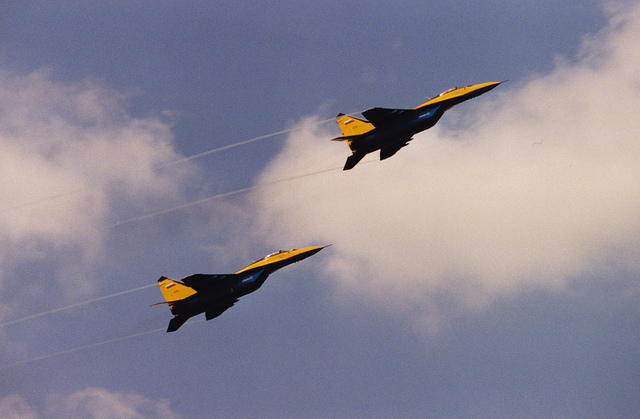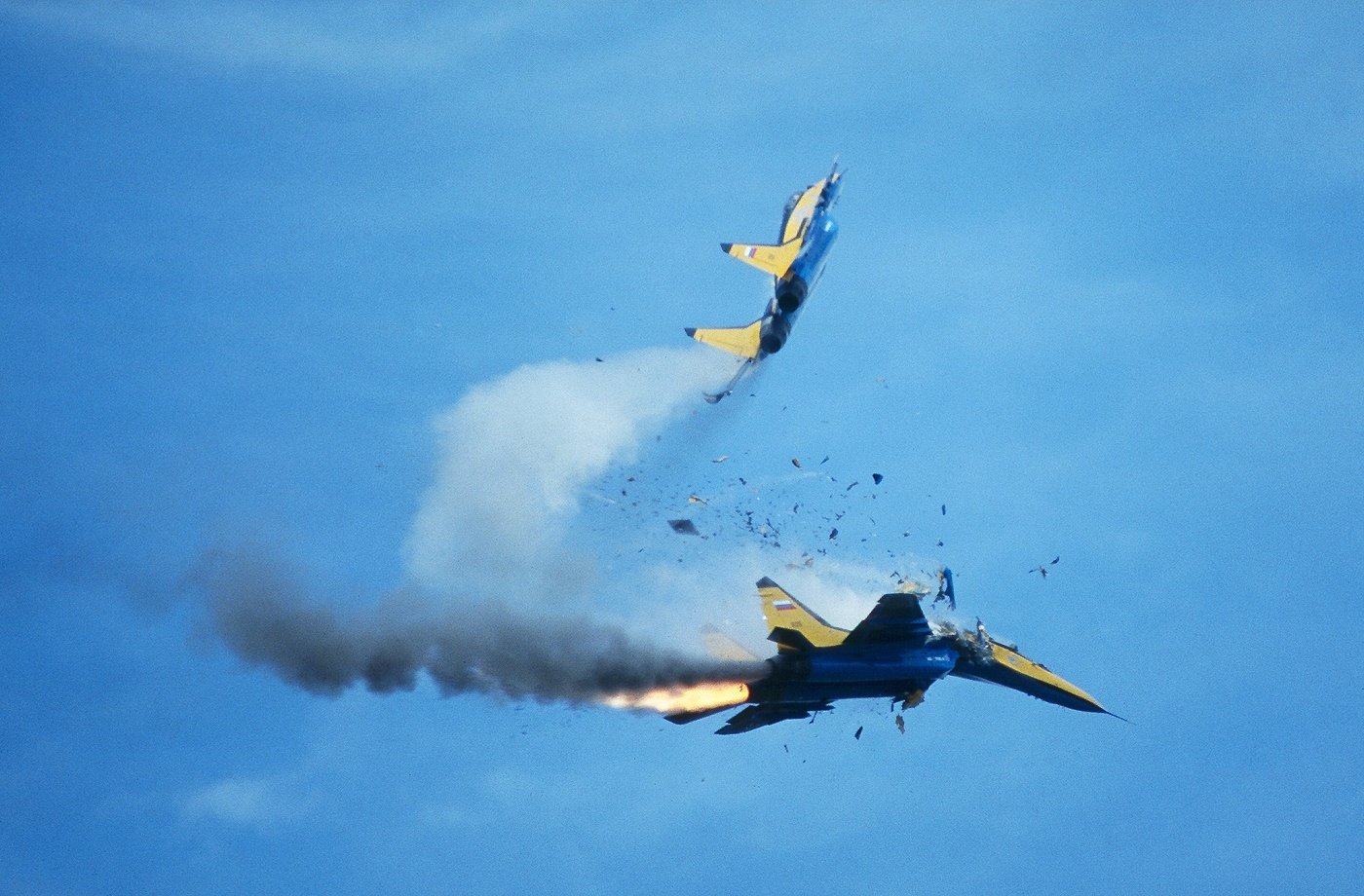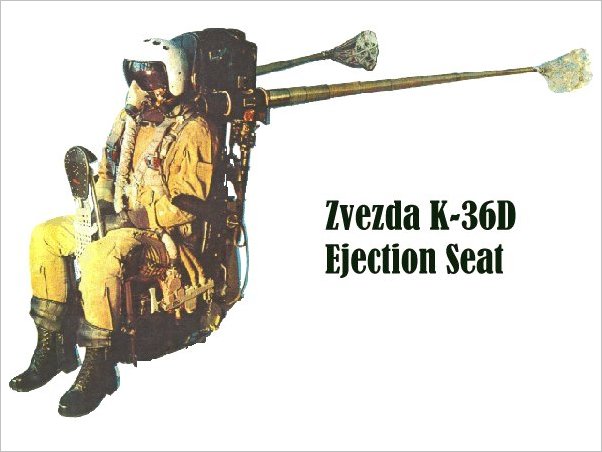A Tale of Two Russian Jets
An account of the 1993 Fairford incident and a classic example of enduring product management
IntroductionOn the evening of July 24, 1993, Michael Buerk the BBC (British Broadcasting Corporation) television newsreader on assignment laconically reported: "Two Russian jets have crashed at an air display in Gloucester. The single-seat MiG-29 fighters collided in front of a crowd of a quarter of a million people at Fairford, near Swindon. The pilots ejected safely."
Remarkably there were no fatalities in the air or on the ground. This misadventure was studied extensively and special commissions were formed to investigate every possible angle and implication. One of the lesser-known heroes of this incident, but not overlooked, is actually a product – the Russian Zvezda K-36D ejection seat.
Origins and Background
The Zvezda K-36D ejection seat's lineage can be traced directly to its German predecessor. During World War II (WWII) the Heinkel Flugzeugwerke aircraft manufacturing company of Rostock, Germany developed one of the first ever airplane ejection seats, the Heinkel 162. The German Luftwaffe was the first air force in the world to operationally employ ejection seats and during WWII there were over sixty German ejections while in combat.
The Russians paid great attention to many German military innovations which they encountered during the war and by the end of WWII the Russian army had assembled a "shopping list" of German military products of interest which the Russians wanted to learn considerably more about. Among those products were the Heinkel 162 ejection seat and the German STG-44 assault rifle made by Haenel Waffenfabrik, which later in 1947 would ostensibly reemerge as the AK-47 (Automatic Kalashnikov assault rifle).
Blueprints for the Heinkel 162 ejection seat were taken from the Luftwaffe library in Berlin and shipped to Russia in 1946 during Operation Osoaviakhim, which was a post-WWII Soviet operation to transport German military engineers, equipment, and design plans to the east. Coincidentally, the USA had a similar program named Operation Paperclip – the prize catch was the famed German rocket scientist Wernher von Braun and his V-2 rocket team.
The Heinkel 162 ejection seat and its blueprints were extensively studied by teams of Russian engineers for several years. Ownership and development of a Russian ejection seat was eventually transferred in 1952 to the newly formed Zvezda design bureau which specializes in highly advanced projects such as oxygen helmets, spacesuits for spacecraft crews, and aircraft escape and survival systems.
The German Heinkel 162 would eventually transpire as the Russian Zvezda K-36D ejection seat, a product which has been continuously developed and manufactured until today.
Cloudy Haze and Miscalculations
The Royal International Air Tattoo (RIAT) annual airshow at RAF Fairford in England is among the world's largest military aviation displays. For the 1993 Air Tattoo the Russians had sent two Mikoyan MiG-29 Fulcrum fighter jets, especially decked out for the display circuit in the old Russian imperial colors of blue, yellow, and black. The pilots were two of the best civilian test pilots the Russians had at the time, Sergey Tresvyatsky and Alexander Beschastnov from the Gromov Flight Research Institute at Zhukovsky (near Moscow). Tresvyatsky was also a cosmonaut.
During the final stages of the demo flight at Fairford both pilots were expected to position themselves at diametrically opposed points on a loop and chase each other around it. Unfortunately it did not work out that way.
At about 1,000 feet (300 meters) a mid-air collision occurred due to a combination of adverse weather conditions, faulty design of the flight plan (parallel loop), and human pilot error. Both aircraft were completely destroyed with Tresvyatsky's jet losing a wing and Beschastnov's jet effectively broken in two.
Both pilots reacted instantaneously and ejected almost immediately as if automatically, which further confirmed the notion the western world had of the "Russian robotic pilot". Both pilots landed safely on parachutes and both struck jets crashed in unpopulated areas. Nobody was injured.
Western aviation experts were amazed at how the ejection seats had successfully handled the very complex ejection situations that the two Russian pilots had encountered. Tresvyatsky had ejected while the airplane was inverted (aka "punch-down") and Beschastnov had ejected while his MiG-29 was in vertigo (simultaneously spinning on all its three axes of movement – vertical, lateral, horizontal).
Aside from the superb and amazing fast reactions of both pilots, recognition eventually set in that it was a truly remarkable product that saved the lives of the two Russian pilots – the Zvezda K-36D ejection seat.
Zvezda K-36D Features
The Zvezda K-36D ejection seat is an engineering marvel. The seat was all mechanical and electric until the mid-1980s which is part of the reason it had a stellar reliability record. Electronics were added to the seat after the mid-1980s.
Some of the more obvious and notable features of the K-36D include a wind-blast shield to protect the pilot's chest from being crushed in a high-speed ejection, stabilization flow rods to prevent seat tumbling in mid-air (which could prevent proper parachute deployment), a massive steel prong that shoots up and shatters the cockpit's glass canopy if needed, booster rockets to raise the seat to a proper altitude if ejection is too close to the ground, pilot arm and leg forced restraints in the seat to prevent injury during ejection, the obvious recovery parachute for safe landing, and more.
This Zvezda K-36D product's mission is to safely remove a pilot from a flying aircraft and it is designed to reliably handle multiple aspects and possible scenarios of this very complex challenge. In order to understand the derived benefits which the seat provides and to verify functional completeness, a thoughtful tool is needed to describe the ability of the Zvezda K-36D to address the overall market problem by merit of its feature scope and capabilities.
PSFB (Problem, Solution, Feature, Benefit)
Within the Blackblot PMTK Methodology™, the Blackblot PSFB template describes the product's ability to address the overall market problem by merit of its feature scope. The outcome of the product being able to solve the market problem is the value which the product provides.
A loose variation of something similar to the PSFB was a process which was used to design products. However, that process is now considered an outmoded way for designing products and modern companies now use the market and product requirements process (MRD/PRD) instead.
Modern companies now use the Blackblot PSFB to document the benefit obtained from each product feature and to illustrate the total value that is derived by using the product to solve the entire market problem.
The Blackblot PSFB components are:- Problem – Describes the market problem facet the customer is facing.
- Solution – Describes the general solution category that was applied, in order to solve the problem.
- Feature – On a conceptual or modular level, describes the component(s) built into the product which provides the solution.
- Benefit – Describes the benefit the customer has realized from the feature being able to solve the market problem facet.
|
Problem |
Solution |
Feature |
Benefit |
|
Seat rotates mid-air |
Stabilizer mechanism |
Flow rods |
Parachute deployment |
|
Low-level ejection |
Faster chute opening |
Altitude control unit |
Parachute deployment |
|
Zero altitude |
Propel seat upward |
Small rockets |
Parachute deployment |
|
Pilot's elbows break |
Containment device |
Rotating side bars |
No injury |
|
Pilot's legs break |
Restraint device |
Leg straps |
No injury |
|
Pilot's chest crushed |
Wind deflection |
Deflector shield |
No injury |
Philosophically, the sum of benefits outlined in the right-hand column of the Blackblot PSFB table describes the total value which the product provides.
Summary
There are many primary and secondary considerations to the 1993 Fairford incident, some interesting and others fascinating, and all with very serious lessons to be learned.
Tresvyatsky's and Beschastnov's Zvezda K-36D ejection seats performed flawlessly under adverse conditions. Continuous product management of the Zvezda K-36D over decades has influenced and directed the engineers of this remarkable product to perfect the design and include the required features which save lives.
The 1993 Fairford incident and the Zvezda K-36D ejection seat is one of the carefully selected classic examples included in the Blackblot Strategic Product Management™ professional training program to illustrate various product management concepts that are part of the Blackblot PMTK Methodology™.



